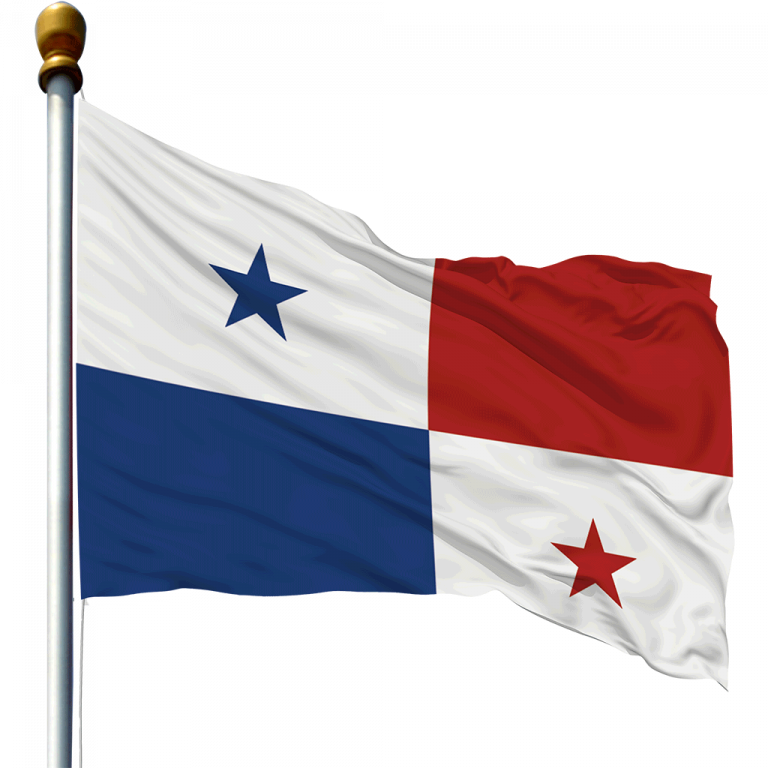Why Does the Panama Flag Look Like That?
The design of the Panama flag holds deep historical, political, and cultural significance, reflecting the country’s journey toward unity and independence. Its colors and symbols were carefully chosen to represent Panama’s identity, political balance, and national pride.
Design and Meaning
The flag of Panama is divided into four quarters with red, blue, and white colors, along with two stars—one blue and one red. Each element carries its own symbolism:
- White: Represents peace and harmony in the new nation, signifying Panama’s commitment to unity and coexistence.
- Blue: Symbolizes the Conservative Party and is also associated with the Pacific Ocean and the sky, reflecting purity, honesty, and justice in civic life.
- Red: Represents the Liberal Party and is linked to the bloodshed and bravery during Panama’s struggles for independence.
- Blue Star: This star stands for purity and honesty, embodying the nation’s ideals of justice and transparency.
- Red Star: The red star represents authority and law, emphasizing Panama’s commitment to governance, stability, and the rule of law.

Historical Context
The Panama flag’s design emerged during Panama’s bid for independence from Colombia in 1903. At that time, there were competing political factions—Conservative and Liberal—within the country. The flag’s colors were chosen to symbolize a balance between these two political forces, signaling the desire for unity after the separation from Colombia.
The flag was designed by Manuel E. Amador, the son of Panama’s first president, Manuel Amador Guerrero, and was sewn by María Ossa de Amador, his wife. It became the official symbol of the nation on November 3, 1903, the day Panama declared independence.
Cultural and National Significance
Beyond its political meaning, the flag reflects Panama’s diverse cultural heritage. The country is home to various cultural influences, including indigenous groups, Afro-Caribbean communities, and European settlers. The flag is a source of pride and identity for Panamanians, often displayed prominently during national holidays and celebrations. It stands as a symbol of Panama’s independence, resilience, and commitment to peace and democracy.


